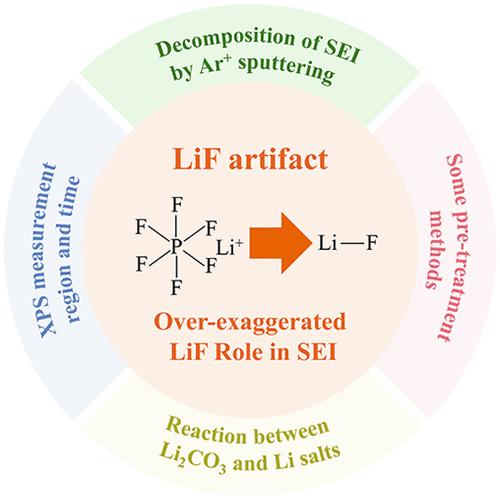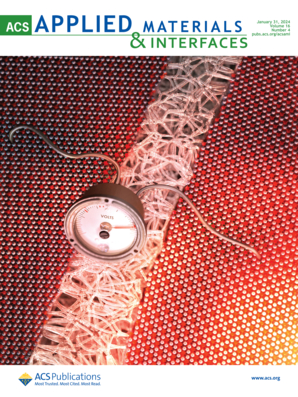LiF Artifacts in XPS Analysis of the SEI for Lithium Metal Batteries
IF 8.2
2区 材料科学
Q1 MATERIALS SCIENCE, MULTIDISCIPLINARY
引用次数: 0
Abstract
The solid electrolyte interphase (SEI) is considered to be the key to the performance of lithium metal batteries (LMBs). The analysis of the SEI and cathode electrolyte interphase (CEI) composition (especially F 1s spectra) by X-ray photoelectron spectroscopy (XPS) has become a consensus among researchers. However, the surface-sensitive XPS characterization is susceptible to LiF artifacts due to several factors, leading to the overexaggerated role of LiF in the analysis of the SEI and CEI. In this paper, we conduct a systematic study on the reasons for the LiF artifacts in the XPS characterization of LMBs. The decomposition of the SEI and CEI components under argon ion sputtering, the reaction between Li2CO3 and LiPF6 in the electrolyte, influence of different sample pretreatments, the selection of the XPS measurement region, and the measurement time on the resulting spectra are investigated. The results indicate that the high content of LiF in the SEI and CEI may be attributed to the LiF artifacts, and the role of LiF in the SEI may be overexaggerated as a consequence. This work sounds an alarm about the potential misuse of argon ion sputtering and the lack of rigorous XPS characterization in SEI studies. This work also helps to set up standardized XPS characterization to provide a more accurate understanding of the role of SEI components.

锂金属电池SEI XPS分析中的liff伪影
固体电解质界面相(SEI)被认为是决定锂金属电池性能的关键。利用x射线光电子能谱(XPS)分析SEI和阴极电解质间相(CEI)成分(特别是f1s谱)已成为研究人员的共识。然而,由于多种因素,表面敏感的XPS表征容易受到liff伪影的影响,导致liff在SEI和CEI分析中的作用被夸大。在本文中,我们对lmb的XPS表征中产生liff伪影的原因进行了系统的研究。研究了氩离子溅射下SEI和CEI组分的分解、电解质中Li2CO3与LiPF6的反应、不同样品预处理、XPS测量区域的选择和测量时间对所得光谱的影响。结果表明,SEI和CEI中LiF的高含量可能归因于LiF伪影,因此LiF在SEI中的作用可能被过度夸大。这项工作为氩离子溅射的潜在滥用和SEI研究中缺乏严格的XPS表征敲响了警钟。这项工作还有助于建立标准化的XPS表征,以更准确地理解SEI组件的作用。
本文章由计算机程序翻译,如有差异,请以英文原文为准。
求助全文
约1分钟内获得全文
求助全文
来源期刊

ACS Applied Materials & Interfaces
工程技术-材料科学:综合
CiteScore
16.00
自引率
6.30%
发文量
4978
审稿时长
1.8 months
期刊介绍:
ACS Applied Materials & Interfaces is a leading interdisciplinary journal that brings together chemists, engineers, physicists, and biologists to explore the development and utilization of newly-discovered materials and interfacial processes for specific applications. Our journal has experienced remarkable growth since its establishment in 2009, both in terms of the number of articles published and the impact of the research showcased. We are proud to foster a truly global community, with the majority of published articles originating from outside the United States, reflecting the rapid growth of applied research worldwide.
 求助内容:
求助内容: 应助结果提醒方式:
应助结果提醒方式:


